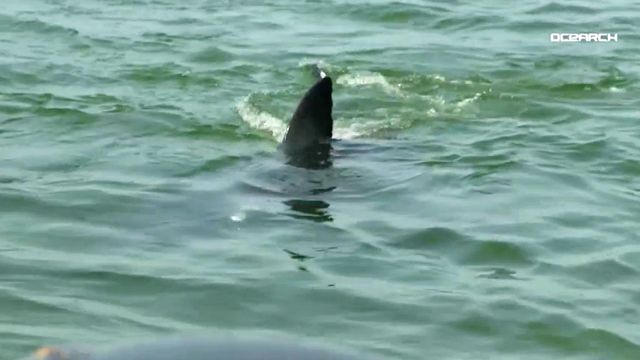Floating laboratory helps scientists shadow sharks
Scientists were stunned last November when a great white shark cruised North Carolina's intracoastal waterway, swimming close to the beach between Southport and Bald Head Island. They knew the shark's path, thanks to a tracking system that captured the movements of Mary Lee - the name the scientists chose for the adult female.
Posted — UpdatedA WRAL News reporter and photographer recently traveled to Martha’s Vineyard to see how the scientists catch the great whites and outfit them with the tracking devices.
With the help of fishermen, the scientists board the MV Ocearch, which is fitted with a lift system that can be deployed over the side the boat. Once they capture a shark, it is towed into position and lifted out of the water, allowing the scientists to perform 12 different measurements within their self-imposed 15-minute time limit.
They also outfit the animal with GPS and other monitoring systems and give it a name before setting it free.
“We’re hoping to study this animal and conserve it, ultimately, and educate the public that these are important animals,” said Dr. Greg Skomal, the lead scientist.
Brenda Anderson performs sonograms on the females to see if they're pregnant.
“My little bit is just to get that basic information on what (they are) giving back to the population,” she said.
The scientists’ methods are advanced compared with older techniques, which involved cutting open the sharks.
“There was a time when I’d take the shark after we were done dissecting it and either eat it or throw it in the dumpster,” Skomal said. “Now, I can watch it swim away. That, to me, is really exciting.”
That was the case with Mary Lee, the shark found swimming along North Carolina last year. Expedition leader Chris Fischer watched as the shark “was up on the beach … very, very shallow and sticking her nose in and out of different rivers and estuaries.”
Fischer says he believes Mary Lee's presence in North Carolina changed the conversation about white sharks.
“When Mary Lee showed up on the beach, the conversation that ensued was like, ‘Wow, why is Mary Lee here? Has she always been coming here? What could she be doing?’ And that is a big difference than, you know, ‘Ahh, run!” he said.
The scientists’ floating laboratory travels the world in the hopes of replacing fear with facts. The researchers say people have a better chance of being struck by lightning twice than having an encounter with a shark.
“The white shark is not a mindless consumer of humans. It’s a precious, critical component of the marine ecosystem, representing the top predator in the ocean,” Skomal said. “If we remove those, that component of the ocean, we’ll have a disequilibrium, a disruption of the natural ecosystem.”
• Credits
Copyright 2024 by Capitol Broadcasting Company. All rights reserved. This material may not be published, broadcast, rewritten or redistributed.




